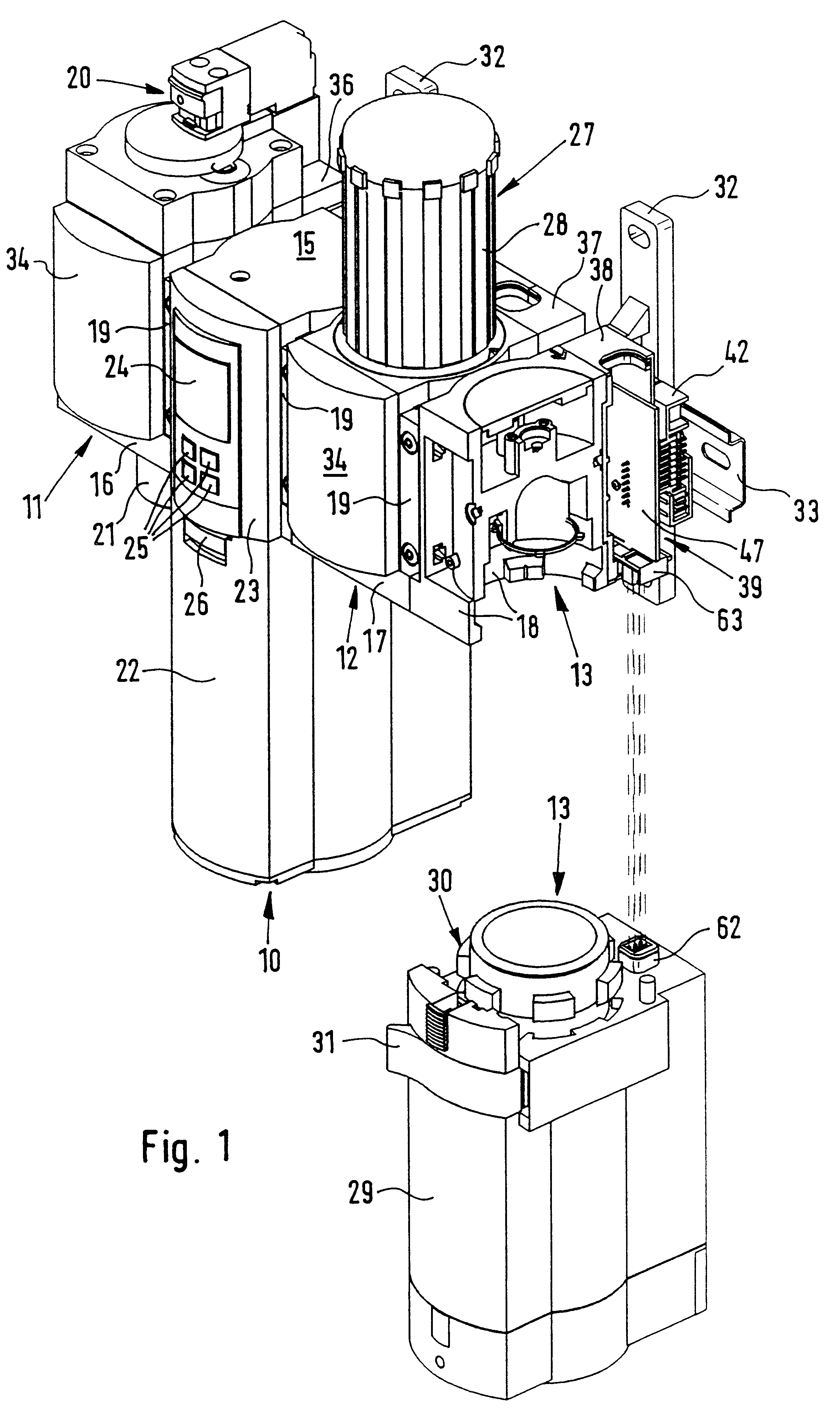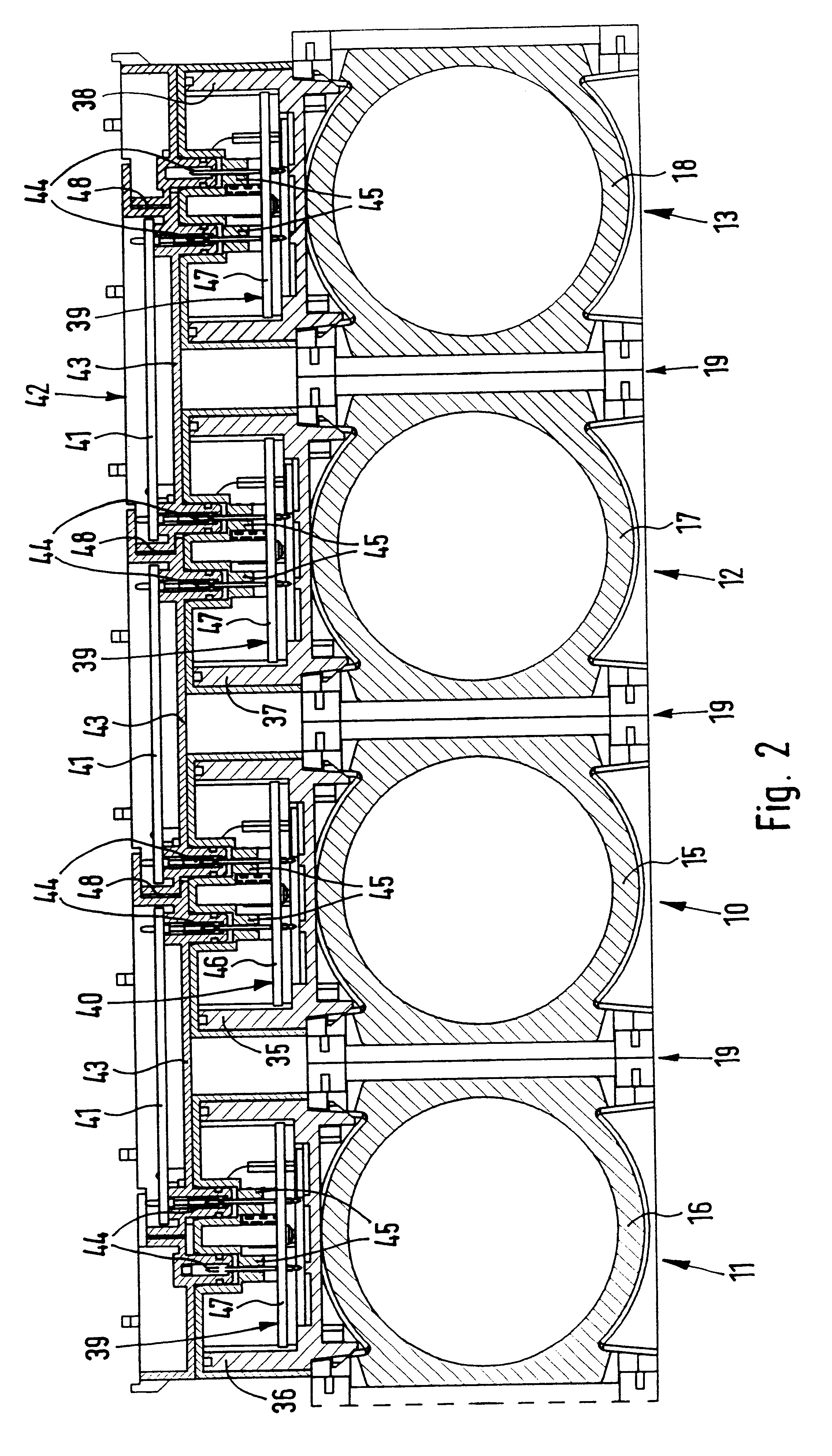Compressed air servicing unit
- Summary
- Abstract
- Description
- Claims
- Application Information
AI Technical Summary
Benefits of technology
Problems solved by technology
Method used
Image
Examples
Embodiment Construction
In the case of the embodiment of the invention, represented in FIGS. 1 and 2, in the form of a compressed air servicing unit a monitoring module 10 is connected with three further modules 11 through 13 in a sequential arrangement. The module 11 is designed in the form of a switching valve module and possesses a switching valve 20 in order to be able to permit the passage of compressed air supplied from the inlet or to shut off such air. The module 12 is designed as a pressure controlling module in order to be able to be set any desired pressure as required in particular circumstances. The partially sectioned module 13, which is cut into two parts, is designed in the form of a filter module.
The four modules 10 through 13 may also be connected together in a different sequential arrangement, further modules with known functions being fitted, such as a soft start module for controlled build up of pressure, an oiler module for controlled supply of oil or a flow rate measuring module for ...
PUM
 Login to View More
Login to View More Abstract
Description
Claims
Application Information
 Login to View More
Login to View More - R&D
- Intellectual Property
- Life Sciences
- Materials
- Tech Scout
- Unparalleled Data Quality
- Higher Quality Content
- 60% Fewer Hallucinations
Browse by: Latest US Patents, China's latest patents, Technical Efficacy Thesaurus, Application Domain, Technology Topic, Popular Technical Reports.
© 2025 PatSnap. All rights reserved.Legal|Privacy policy|Modern Slavery Act Transparency Statement|Sitemap|About US| Contact US: help@patsnap.com



